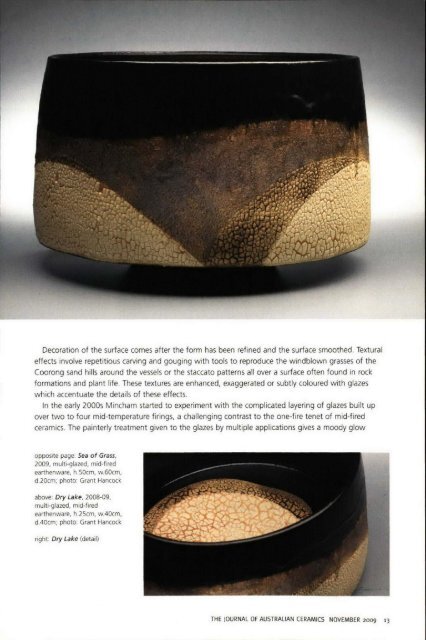The Journal of Australian Ceramics Vol 48 No 3 November 2009
You also want an ePaper? Increase the reach of your titles
YUMPU automatically turns print PDFs into web optimized ePapers that Google loves.
Decoration <strong>of</strong> the surface comes after the form has been refined and the surface smoothed. Textural<br />
effects involve repetitious carving and gouging with tools to reproduce the windblown grasses <strong>of</strong> the<br />
Coorong sand hills around the vessels or the staccato patterns all over a surface <strong>of</strong>ten found in rock<br />
formations and plant life. <strong>The</strong>se textures are enhanced, exaggerated or subtly coloured with glazes<br />
which accentuate the details <strong>of</strong> these effeds.<br />
In the early 2000s Mincham started to experiment with the complicated layering <strong>of</strong> glazes built up<br />
over two to four mid-temperature firings, a challenging contrast to the one-fire tenet <strong>of</strong> mid-fired<br />
ceramics. <strong>The</strong> painterly treatment given to the glazes by multiple applications gives a moody glow<br />
opposite page: Sea <strong>of</strong> Grass,<br />
<strong>2009</strong>, multi-glazed, mid-fired<br />
earthenware, h.50cm, w.60cm,<br />
d.20cm; photo: Grant Hancock<br />
above: Dry Lake, 2008-09,<br />
multi-glazed, mid· fired<br />
earthenware, h.25cm, wAOcm.<br />
dAOcm; photo: Grant Hancock<br />
right: Dry Lake (detail)<br />
THE 10URNAl OF AUSTRALIAN CERAMICS NOVEMBER <strong>2009</strong> 13


















